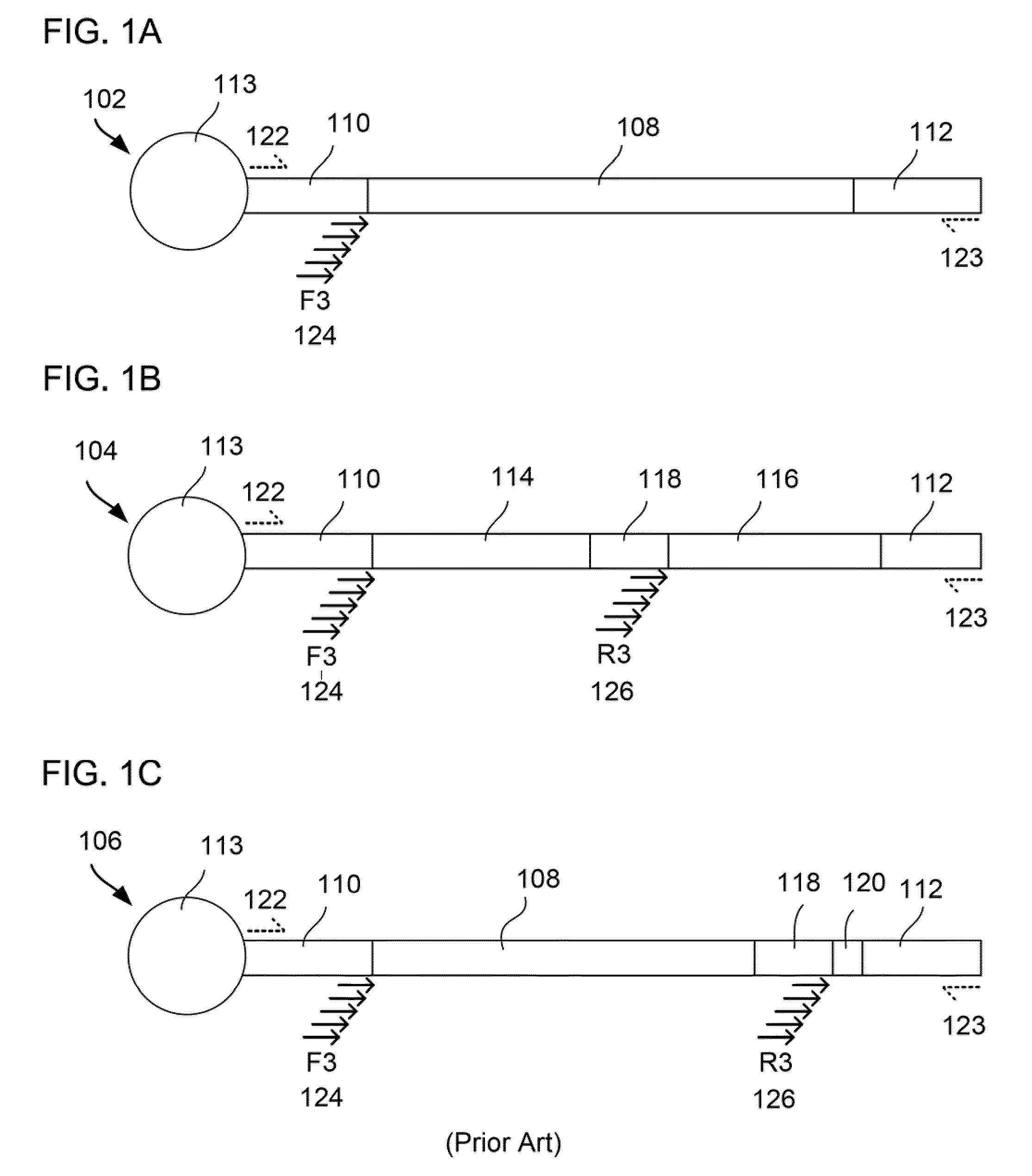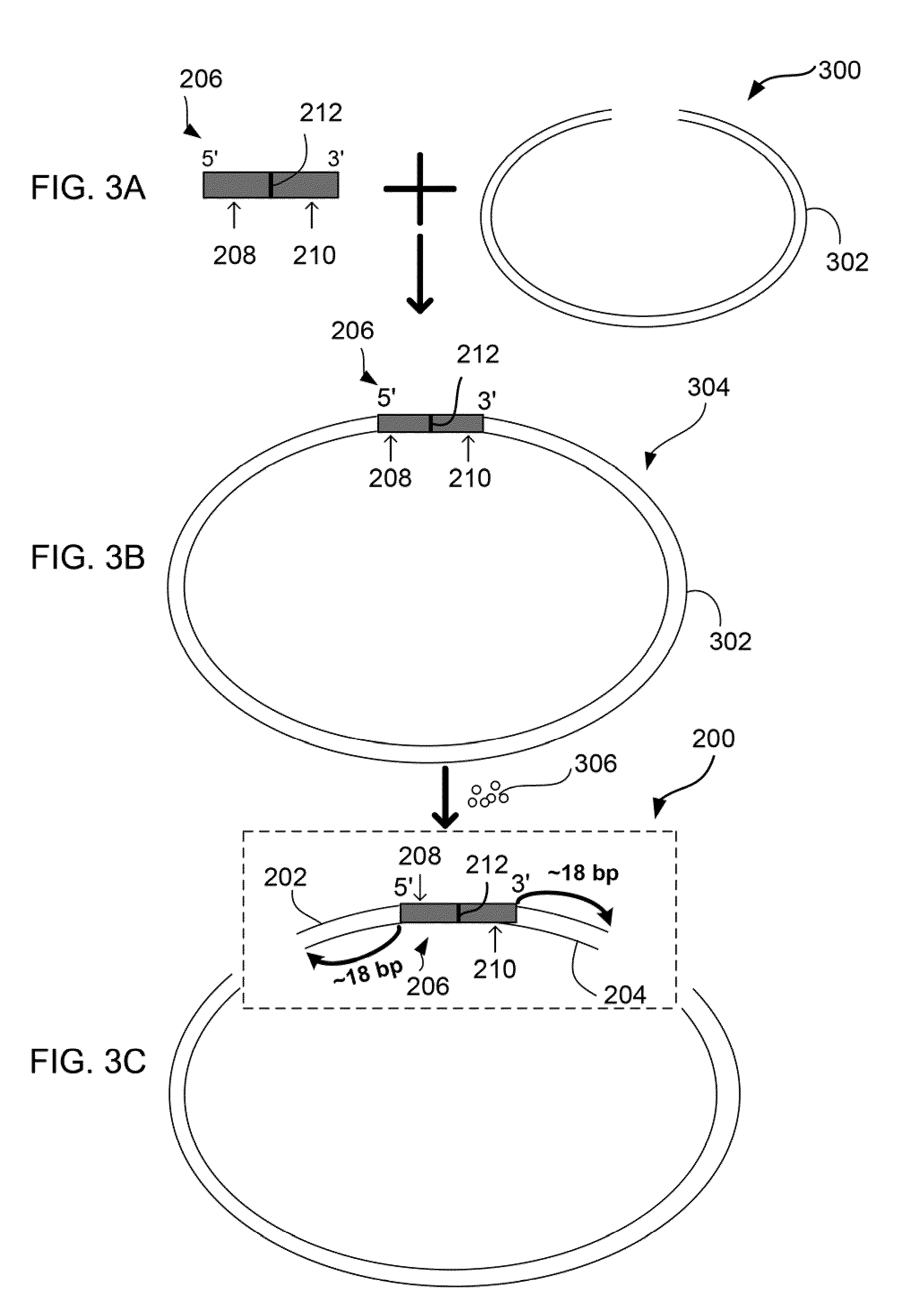MULTIPLEX BARCODED PAIRED-END DITAG (mbPED) LIBRARY CONSTRUCTION FOR ULTRA HIGH THROUGHPUT SEQUENCING
a technology of paired-end ditag and library, applied in the field of nucleic acid sequencing, can solve the problems of unaddressed need, cost of sequencing is also almost twice as much, and the complexity of building a mate-paired or a barcoded fragment library is more complex than that of a fragment library
- Summary
- Abstract
- Description
- Claims
- Application Information
AI Technical Summary
Benefits of technology
Problems solved by technology
Method used
Image
Examples
example 1
Structures of Barcoded Adaptors and Barcoded Paired-End Ditags (bPEDs)
[0092]The invention relates to designing a set of barcoded adaptors and employing type II restriction enzymes (either the same or different species) that bind their recognition sites within the barcoded adaptors to generate bPEDs in a one-barcode-per-library fashion to construct bPED libraries from genomic and / or transcriptomic libraries. The bPED constructs (FIGS. 2-3) are then used to make “fragment” libraries for ultra high throughput sequencing. The “DNA fragment 108” in the fragment library 102 (FIG. 1) is replaced by the bPED construct 200 (FIG. 2). Thus, the barcode sequence 212 not only has a direct physical association with the restriction enzyme sites 208, 210 and the ditag sequences 202, 204, it also functions as an intrinsic fingerprint to represent the ditag sequences 202, 204, which are retrieved from the terminal ends of a DNA insert.
[0093]FIG. 2 illustrates the structural relationship between the b...
example 2
Barcoded Paired-End Ditag (bPED) Library
[0094]FIGS. 3A-3C show steps for construction of a bPED library 300. Barcoded Paired-End Ditags (bPEDs) 200 are generated from a barcoded adaptor 206 that has a barcode sequence 212 (either a virtual or a real sequence) flanked by a pair of type II restriction enzyme recognition sites 208, 210. The barcoded adaptor 206 is ligated to DNA fragments (inserts) 302. Digestion of the ligated DNA fragments 304 by REs 306, which binds to the RE recognition sites 208, 210, releases two terminal tag sequences 202, 204 from the insert 302 and thus generates a bPED fragment 200.
example 3
Using Mono-Barcoded Paired-End Ditag Library as a Fragment Library for Sequencing
[0095]Using SOLID™ 3 sequencing as an example, each individual bPED library or multiplex barcoded Paired-End Ditag (mbPED) library can be treated as a single “fragment” library for a SOLID™ 3 sequencer, i.e., each bPED clone is treated as a single DNA fragment during library construction, sequencing, and sequence analysis by bioinformatics means. In such an application, the DNA fragment 108 between P1 and P2 adaptors 110, 112 of a fragment library 102 (FIG. 1A) is replaced by a bPED sequence 200 (FIG. 2B) generated from a barcoded adaptor 206 containing a pair of type II. RE recognition sites 208, 210 (FIG. 2B).
PUM
| Property | Measurement | Unit |
|---|---|---|
| Length | aaaaa | aaaaa |
Abstract
Description
Claims
Application Information
 Login to View More
Login to View More - R&D
- Intellectual Property
- Life Sciences
- Materials
- Tech Scout
- Unparalleled Data Quality
- Higher Quality Content
- 60% Fewer Hallucinations
Browse by: Latest US Patents, China's latest patents, Technical Efficacy Thesaurus, Application Domain, Technology Topic, Popular Technical Reports.
© 2025 PatSnap. All rights reserved.Legal|Privacy policy|Modern Slavery Act Transparency Statement|Sitemap|About US| Contact US: help@patsnap.com



